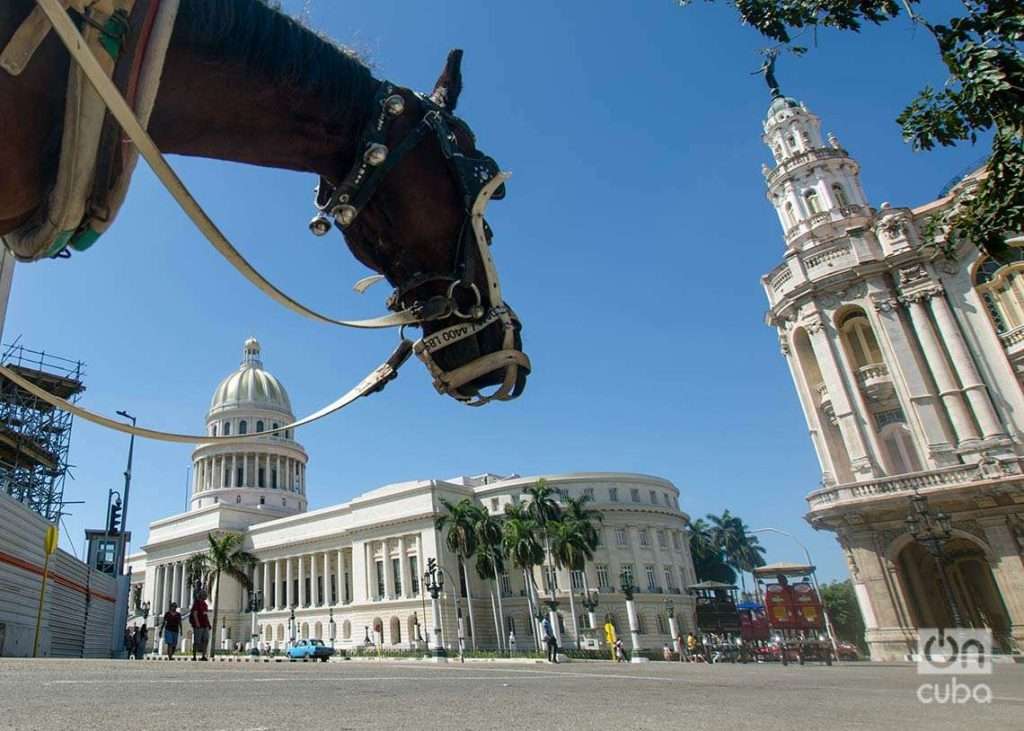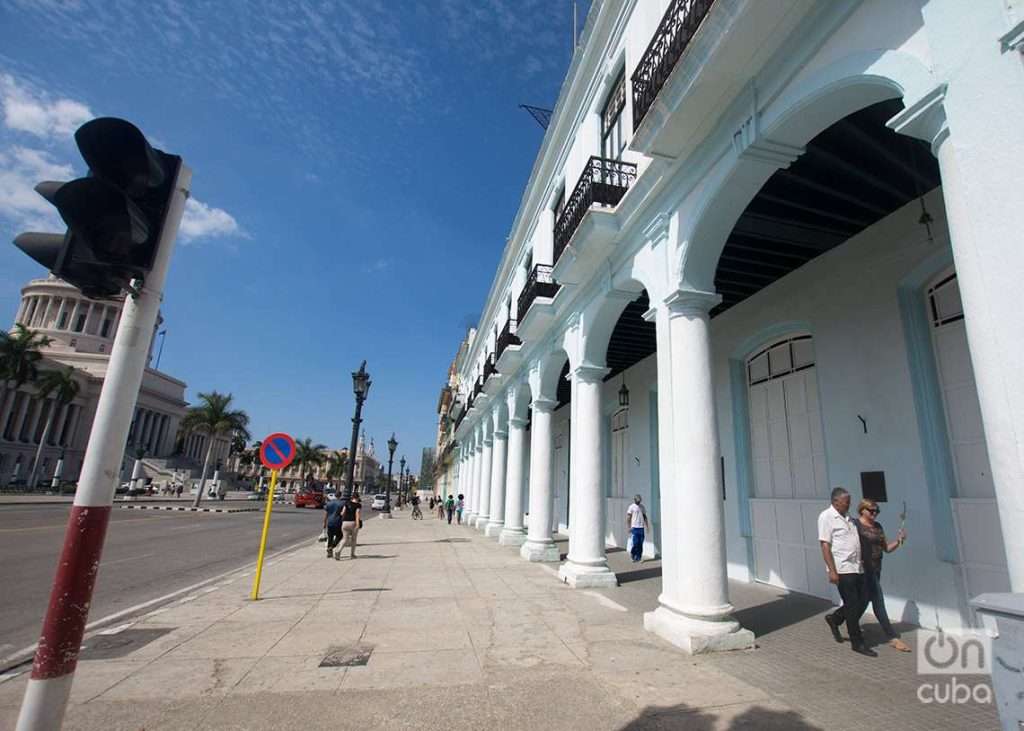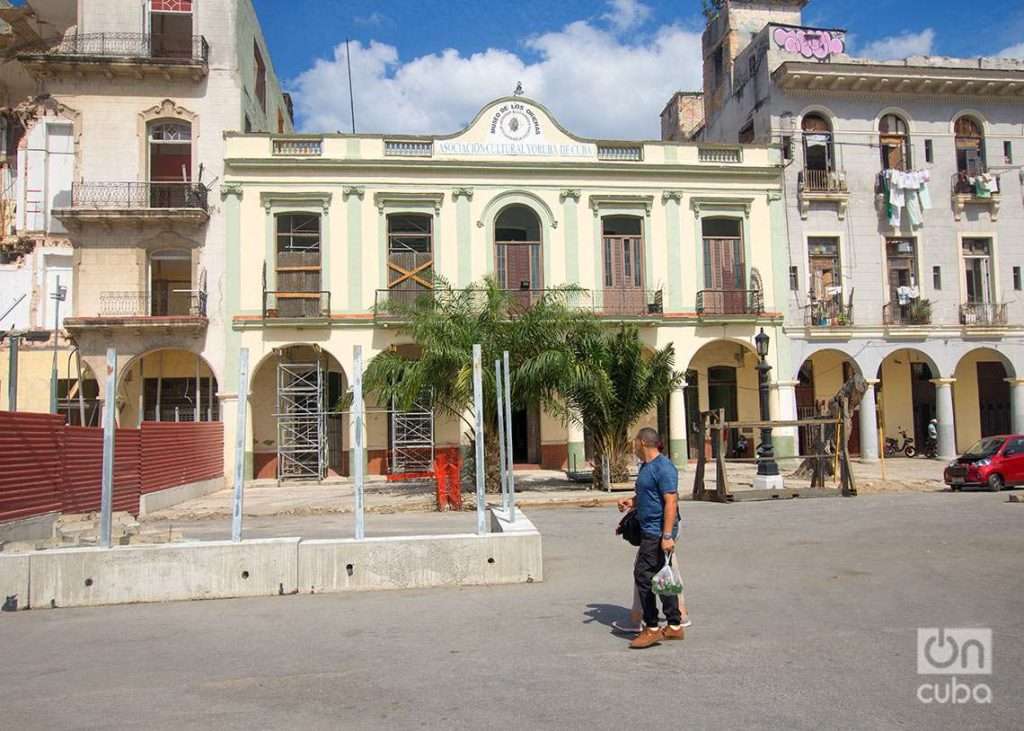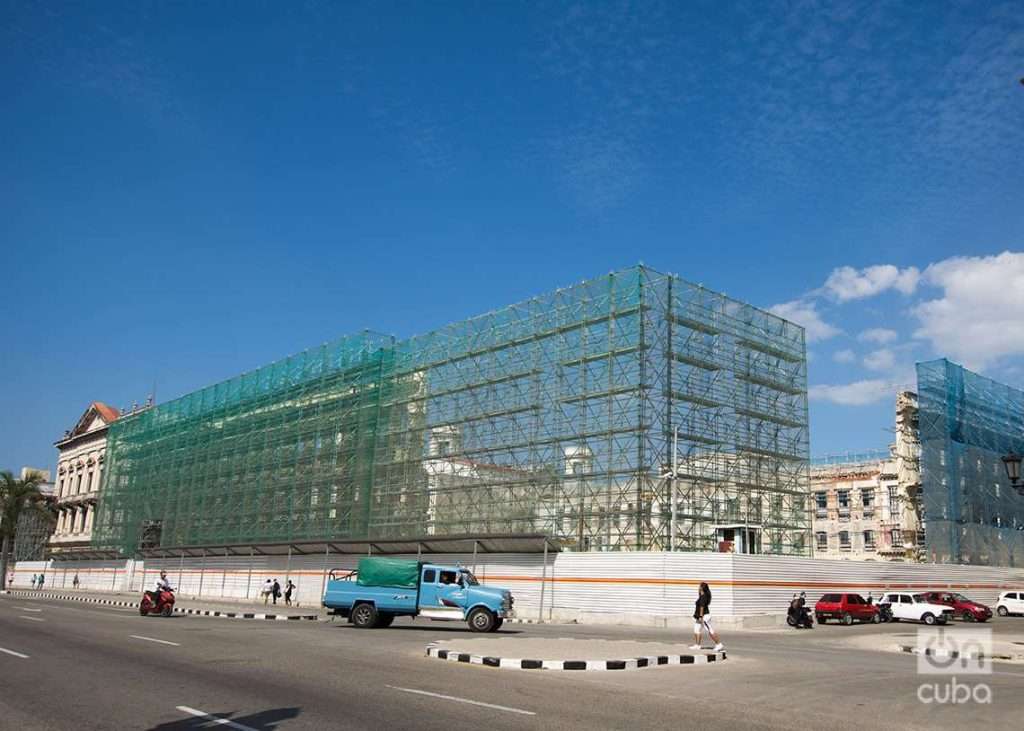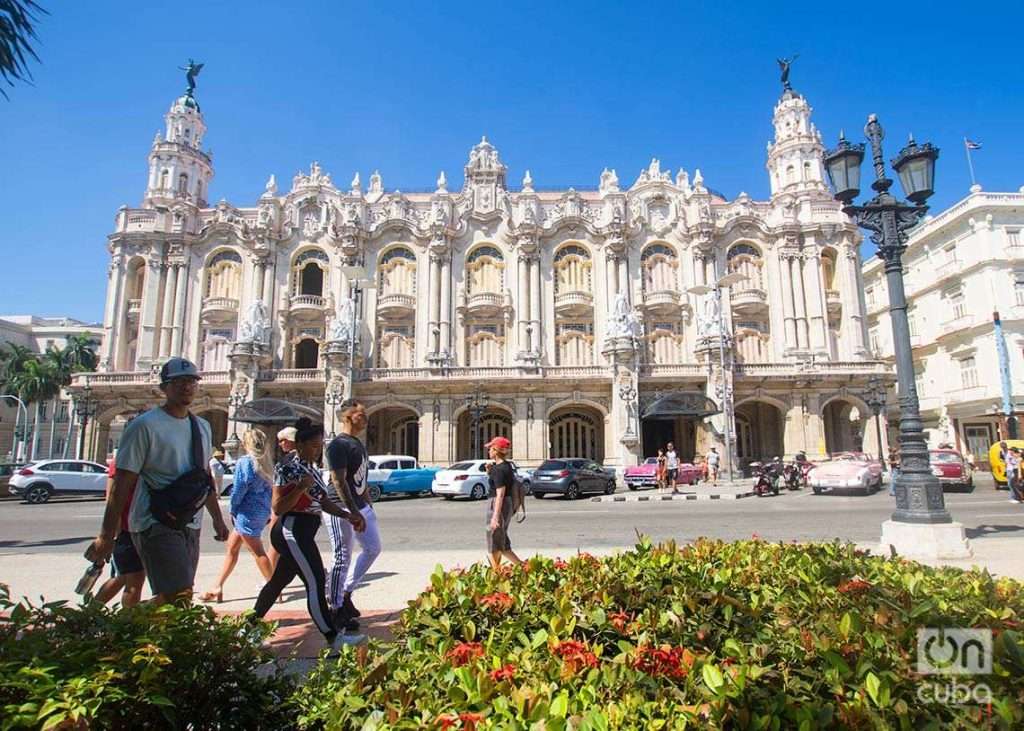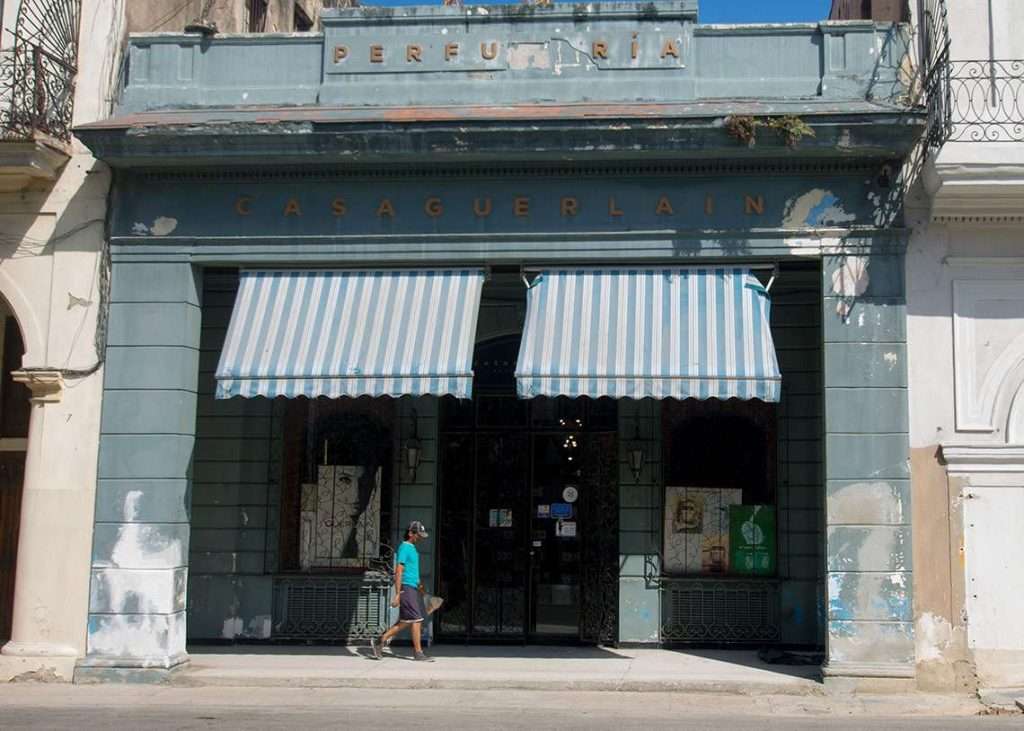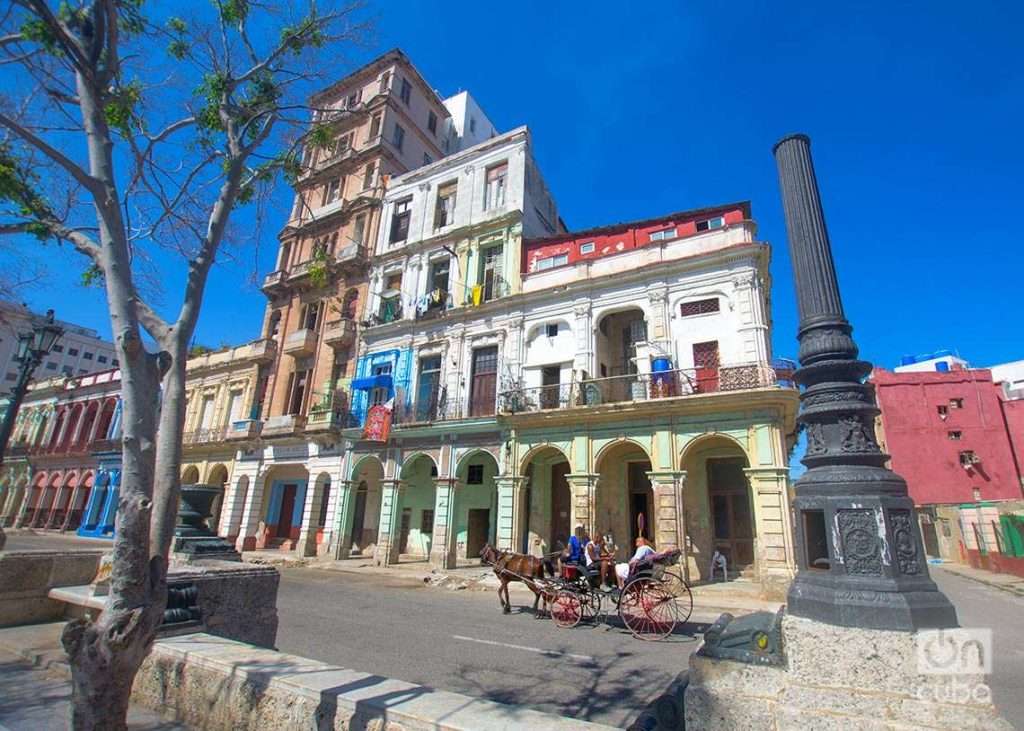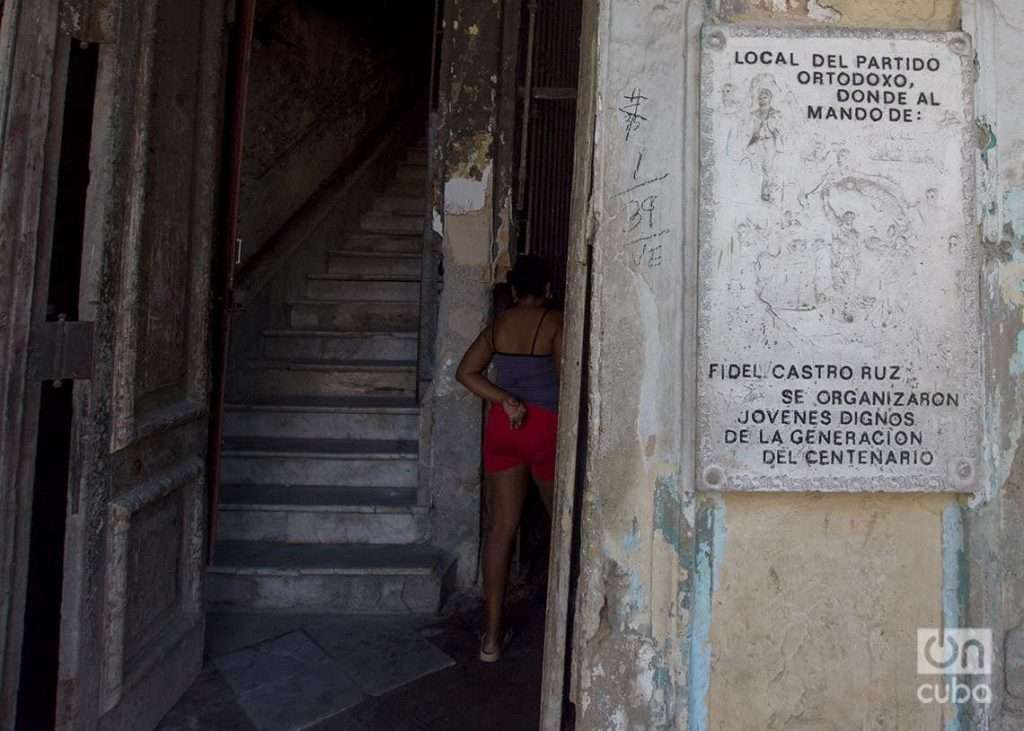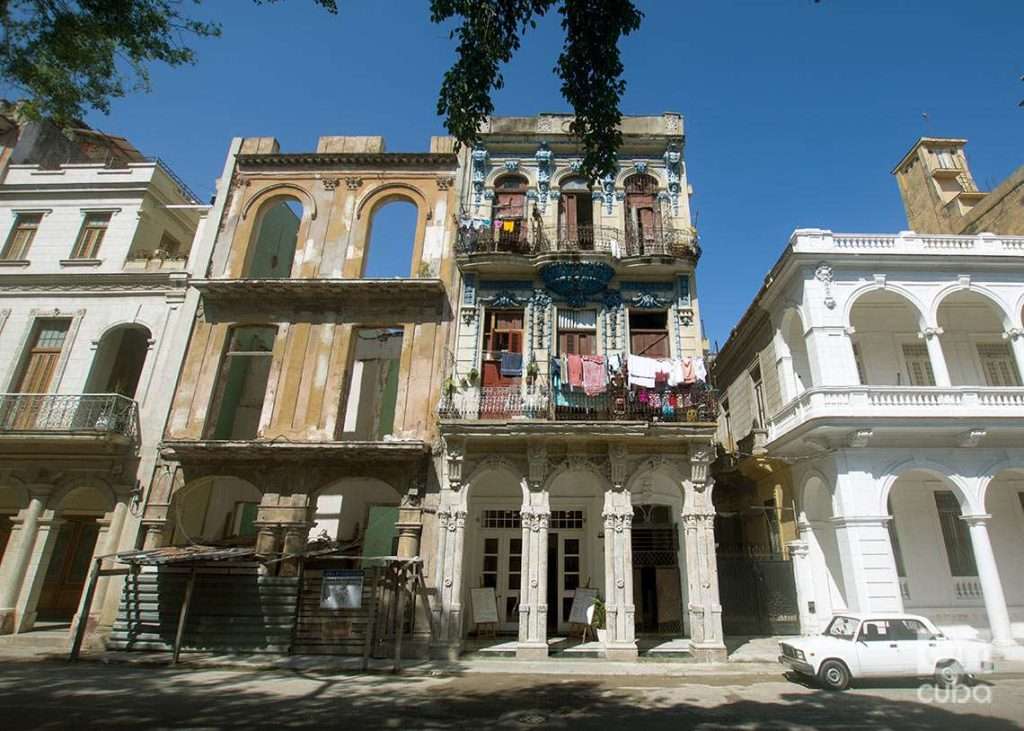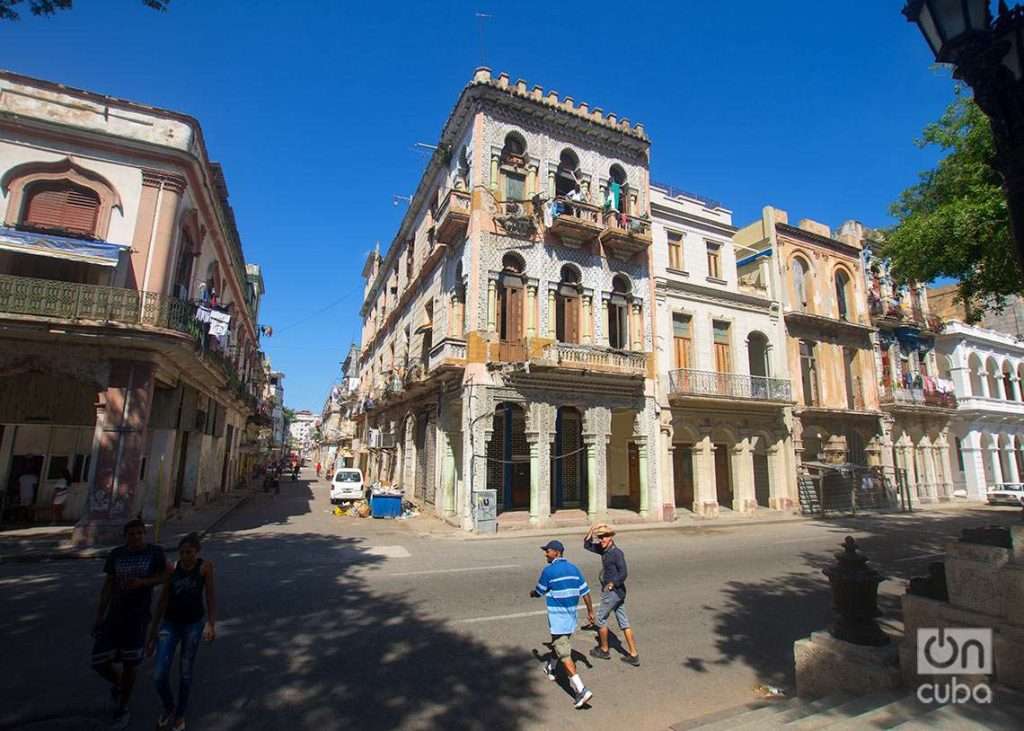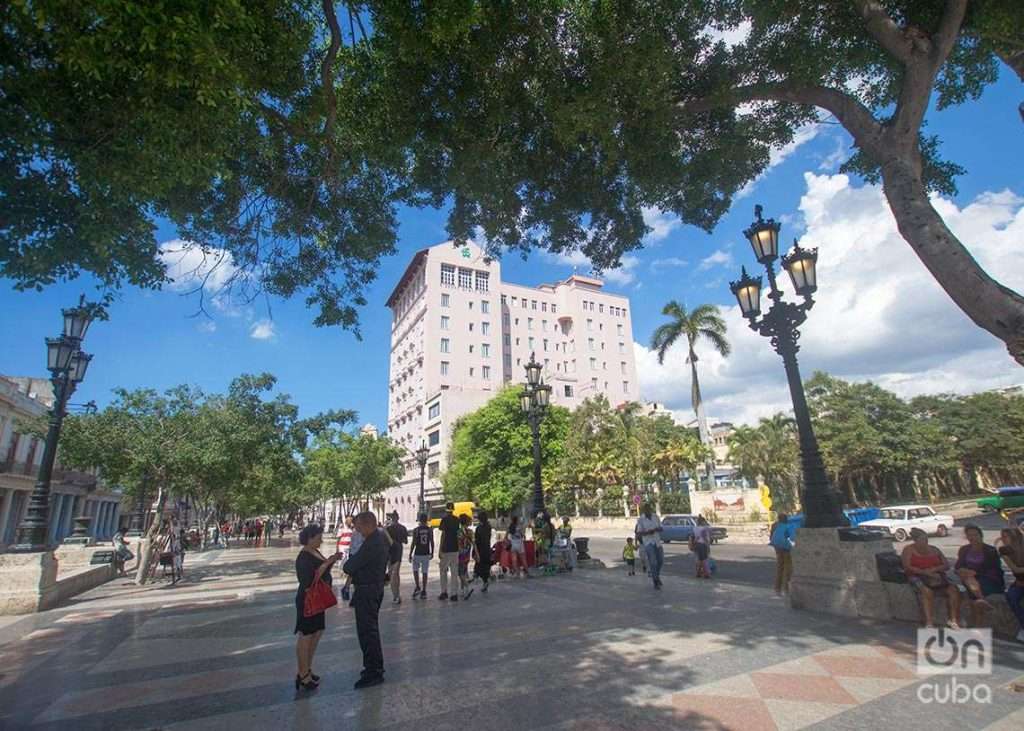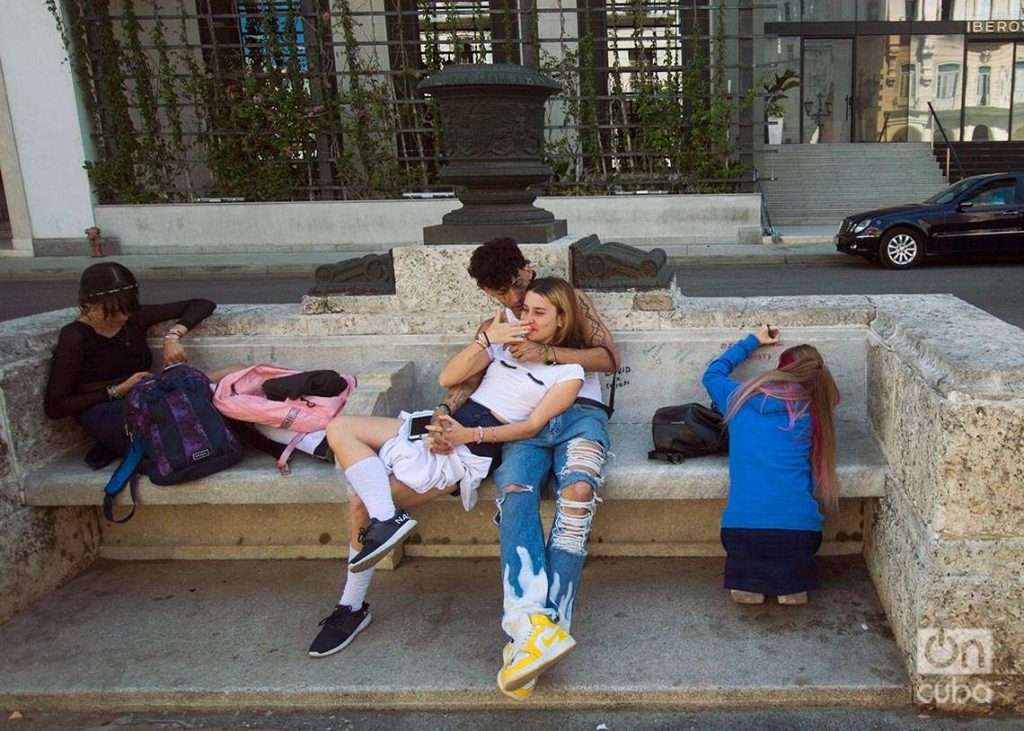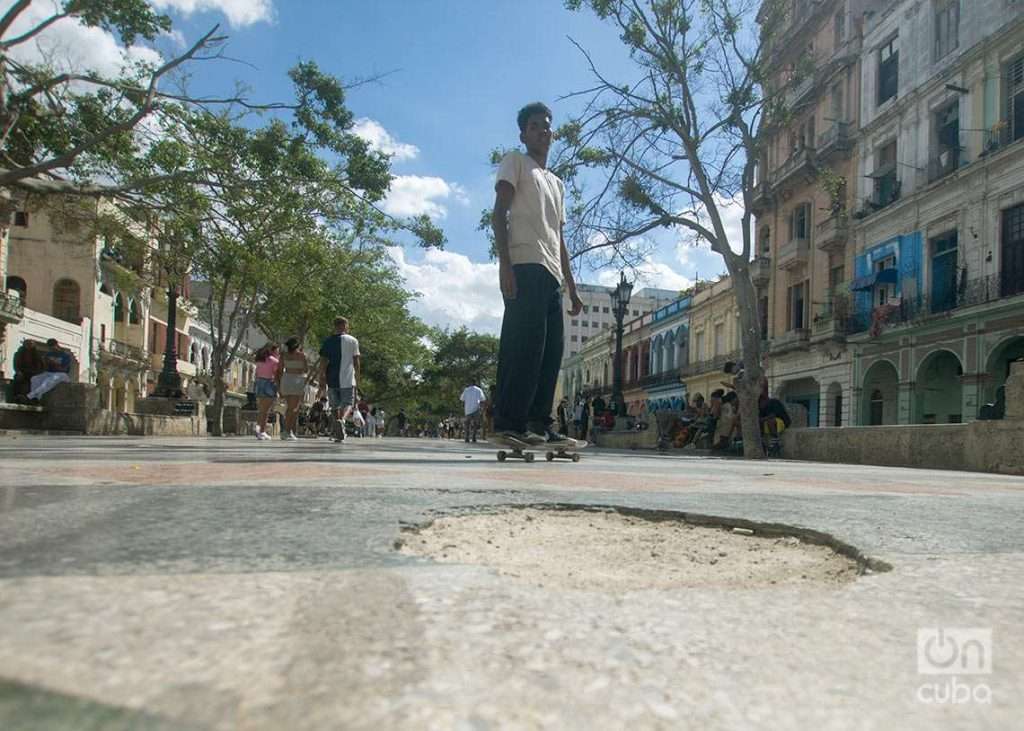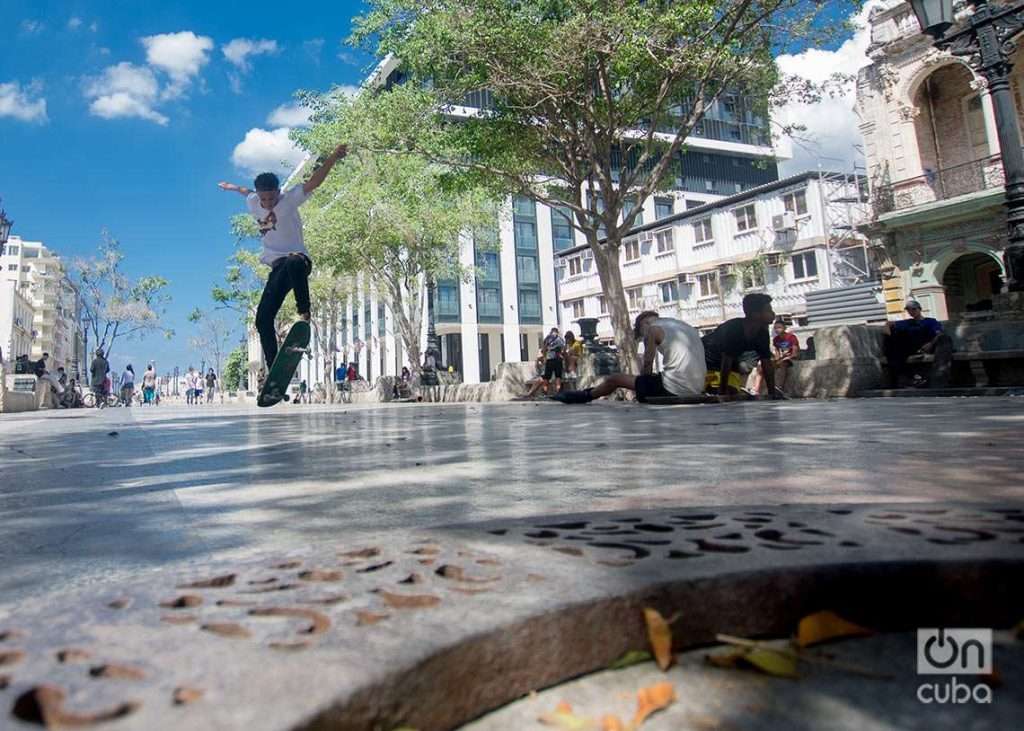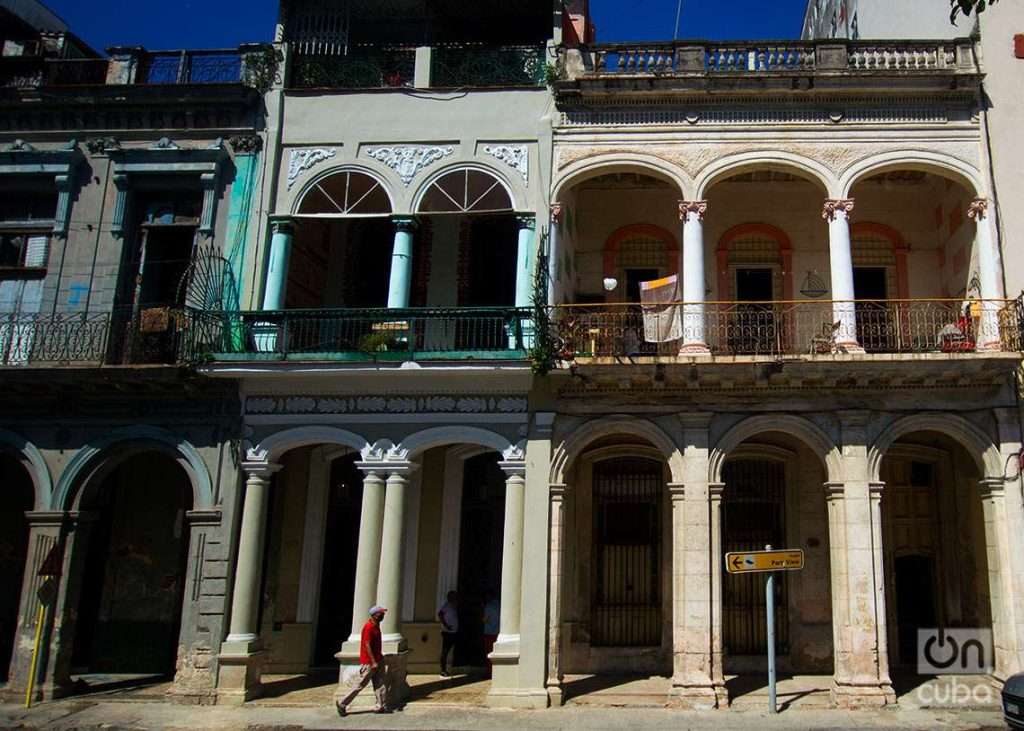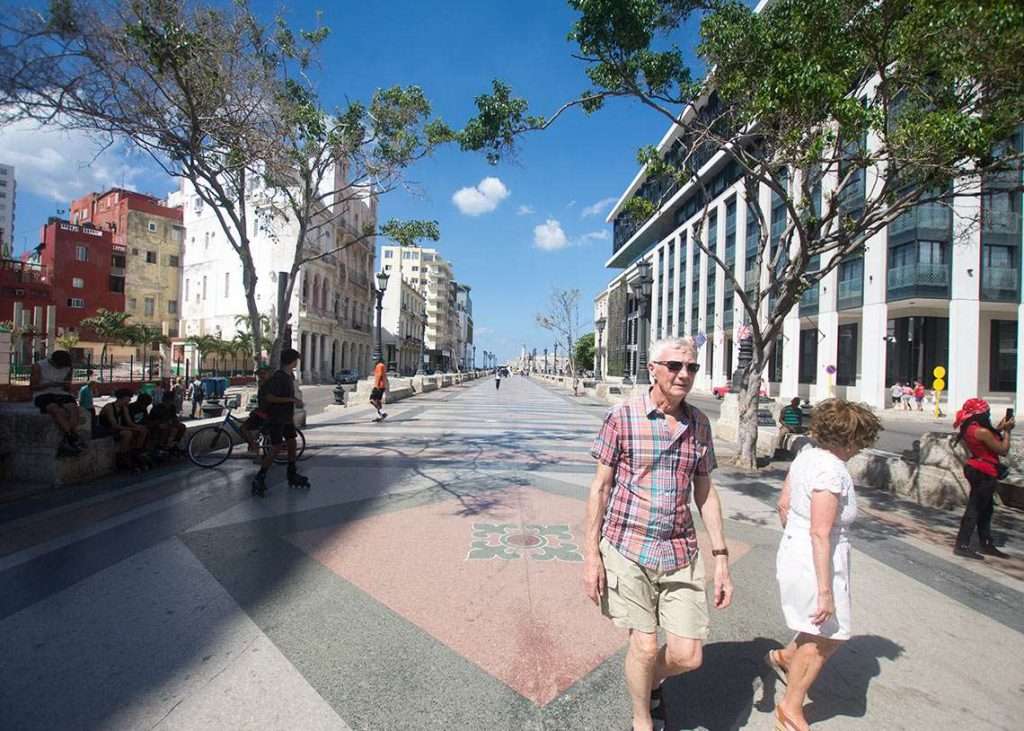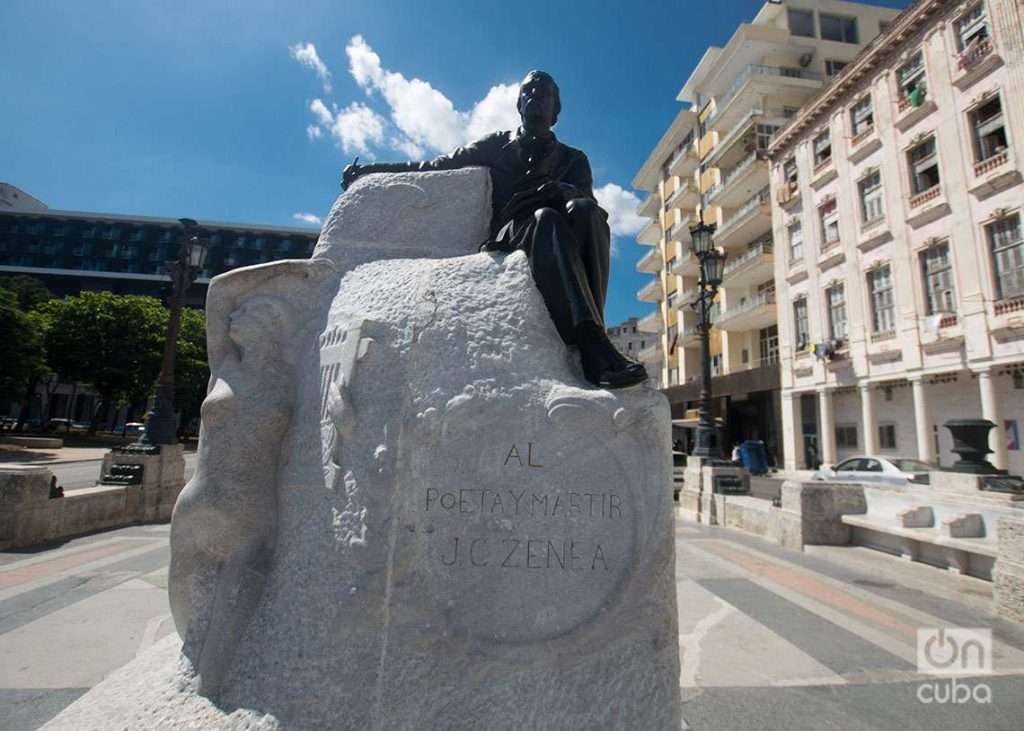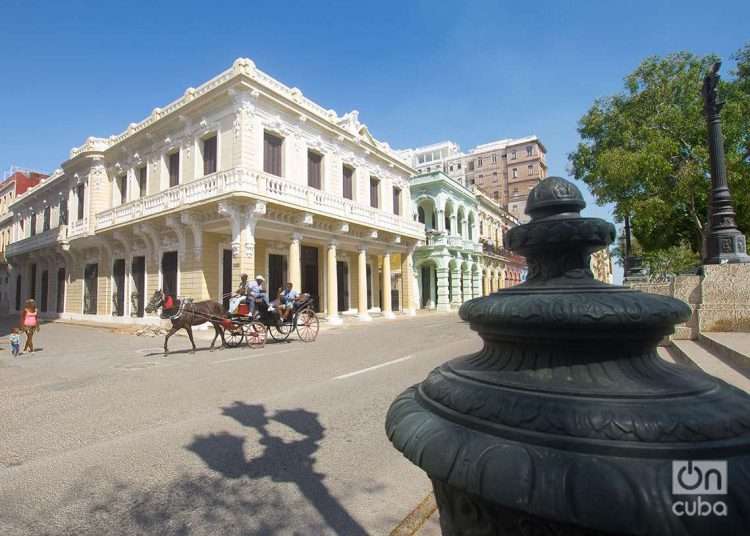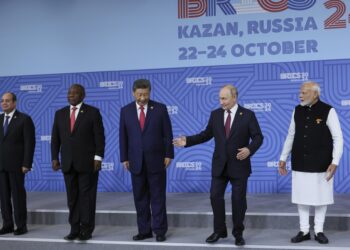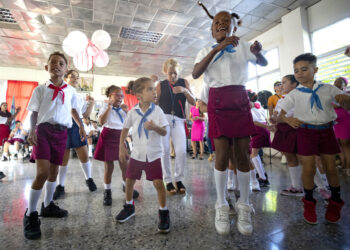The Prado is, without a doubt, one of Havana’s emblematic places. Its spacious promenade, with its marble benches, its lampposts and its iconic bronze lions, is a regular meeting and resting place, for recreation and merchandising and other city exchanges.
Numerous locals and tourists parade through the Prado every day. Both young and old come together, people taking shelter from the sun and the heat of the day, couples looking for a moment of solitude — even in the sight of many —, people trying to sell or swap their houses, and neighbors who take over the place as part of their environment, of their daily life.
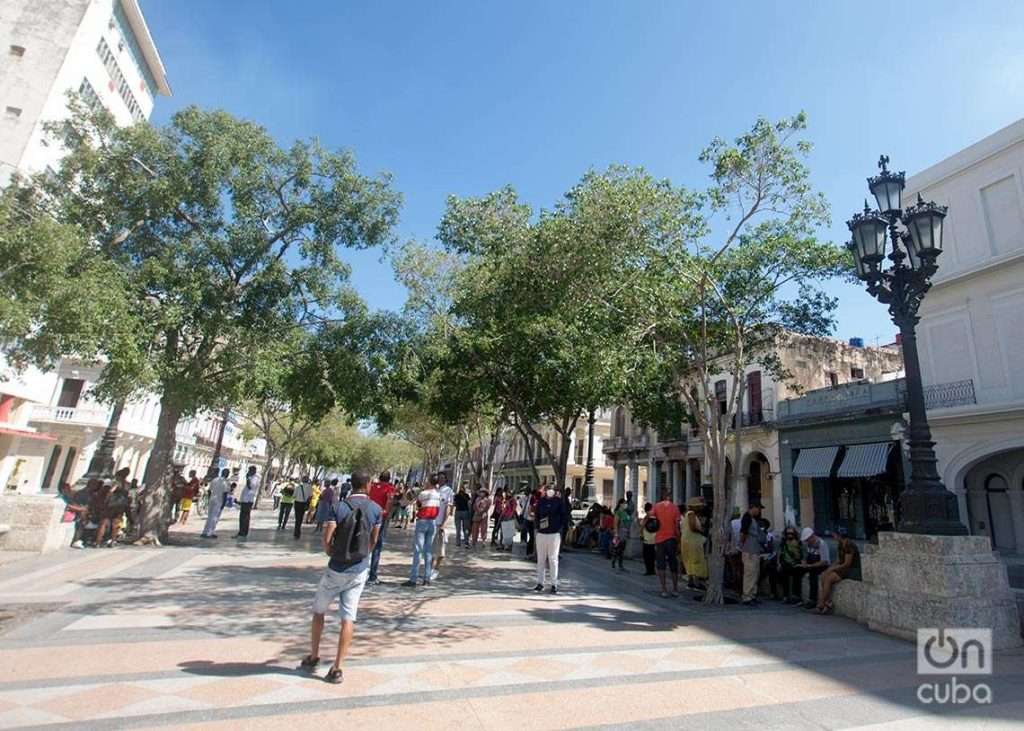
The promenade is a place frequented by artisans, creators who offer their paintings, carvings, textiles and other works to foreign visitors and local passersby. As it is for children and teenagers who retrace it from one side to another, who overwhelm it with their games and races, both on foot and on skateboards.
All this activity has returned, for good, after the impasse of the pandemic. Then, especially at the most critical moments, the tourists and the carefree walkers, the silent lovers and the children with their noise and antics disappeared. But little by little everything has been returning to normal.
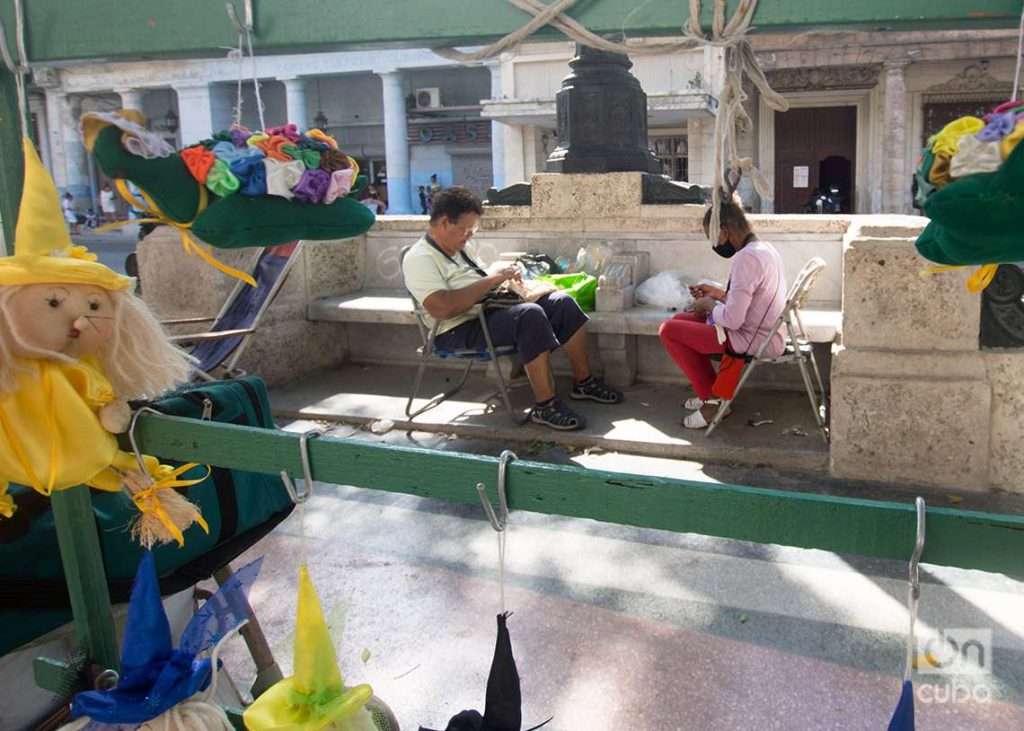
Urban border between Centro Habana and Old Havana, the Prado, however, is more than its iconic promenade. It is actually an extensive avenue 2 kilometers long, built at the end of the 18th century and transformed several times throughout its history.
Although the promenade is its most recognizable face, the artery actually begins before, at the Fuente de la India and in front of the central Parque de la Fraternidad, and extends to Havana Malecón, passing through the esplanade of the Capitol and the Parque Central, with its monumental sculpture of José Martí.
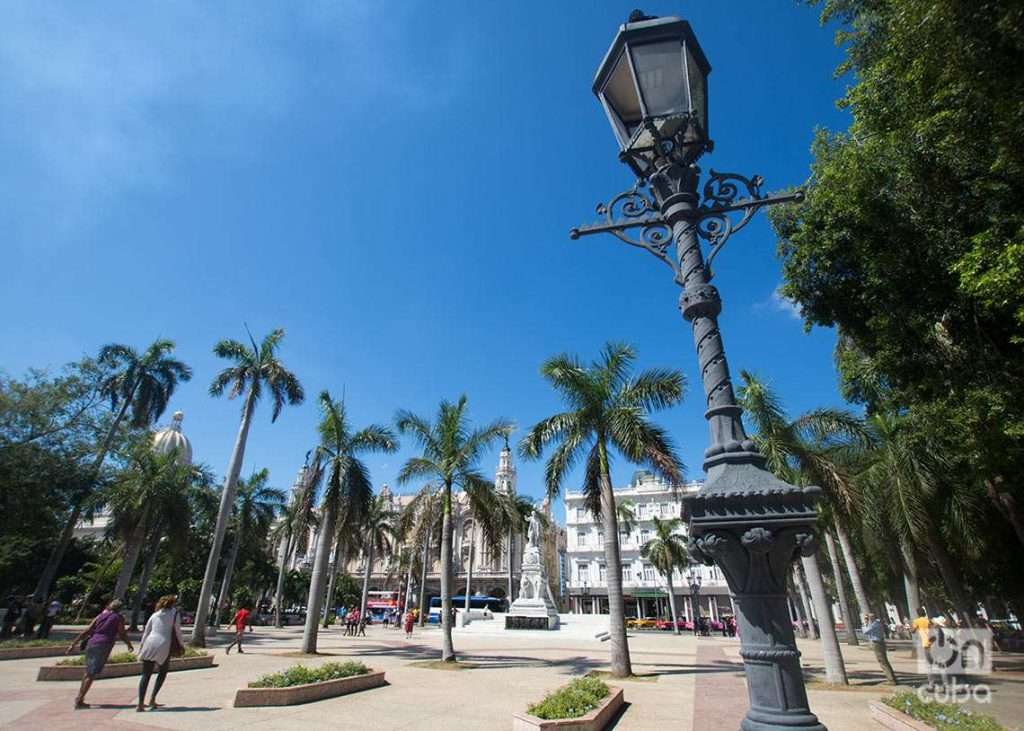
Its surroundings include unique buildings of the Cuban capital, such as the Capitol and the Grand Theater of Havana, and hotels such as the Inglaterra, the wreckage of the Saratoga, the Parque Central and the luxurious Grand Packard. In addition, in its surroundings there are monuments, colonial fortifications, schools, businesses and institutions; everyday places for walkers, but historical roots many times forgotten, unnoticed.
Our photojournalist Otmaro Rodríguez proposes to bring us closer to several of them. His images offer a contemporary look at this unique place in the capital and confirm the life that surrounds it and the values, not all of them equally well known and preserved, that exalt it.
